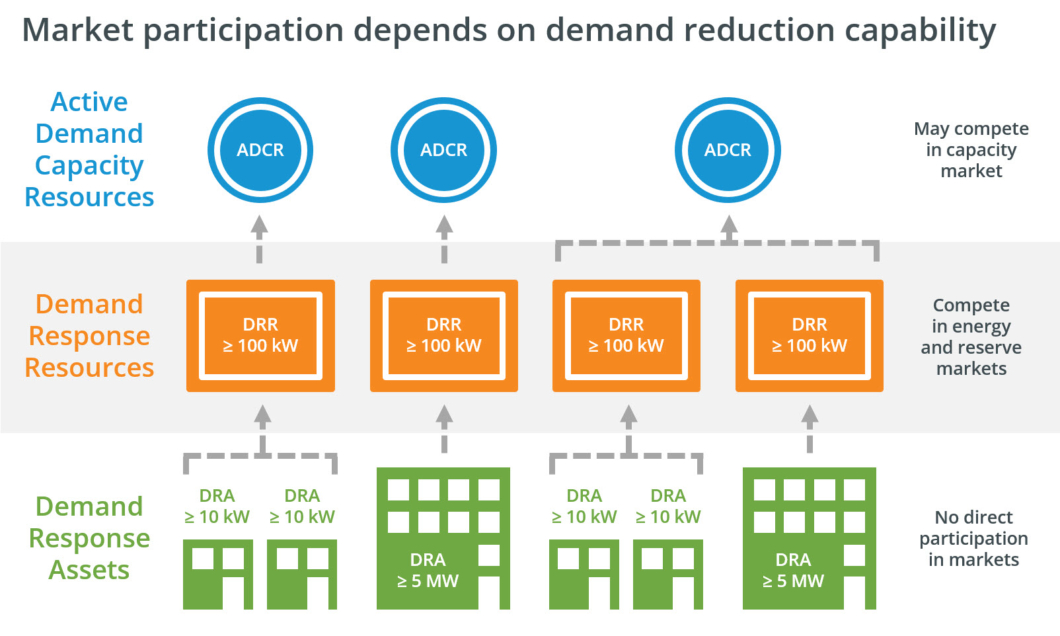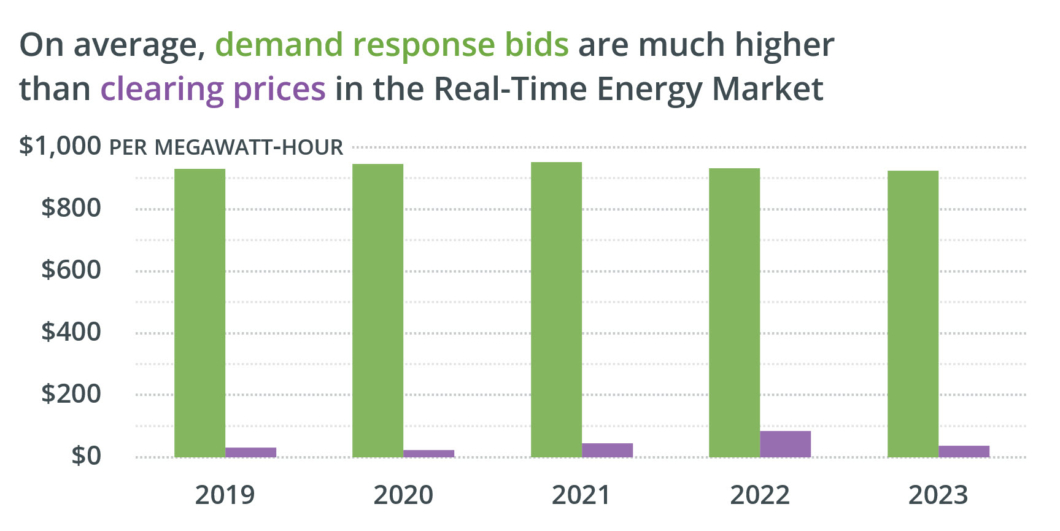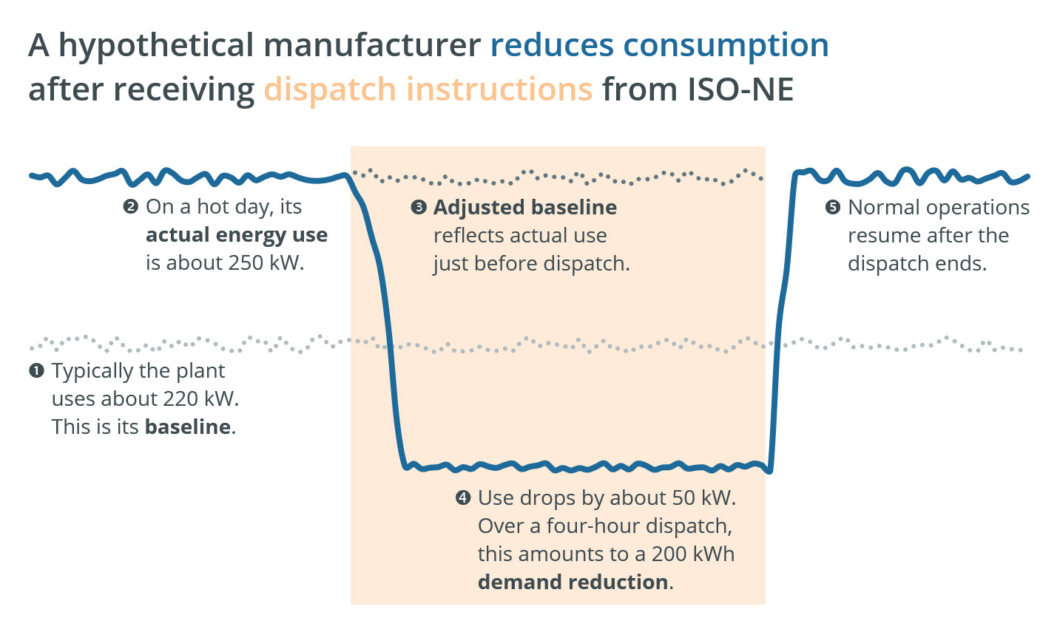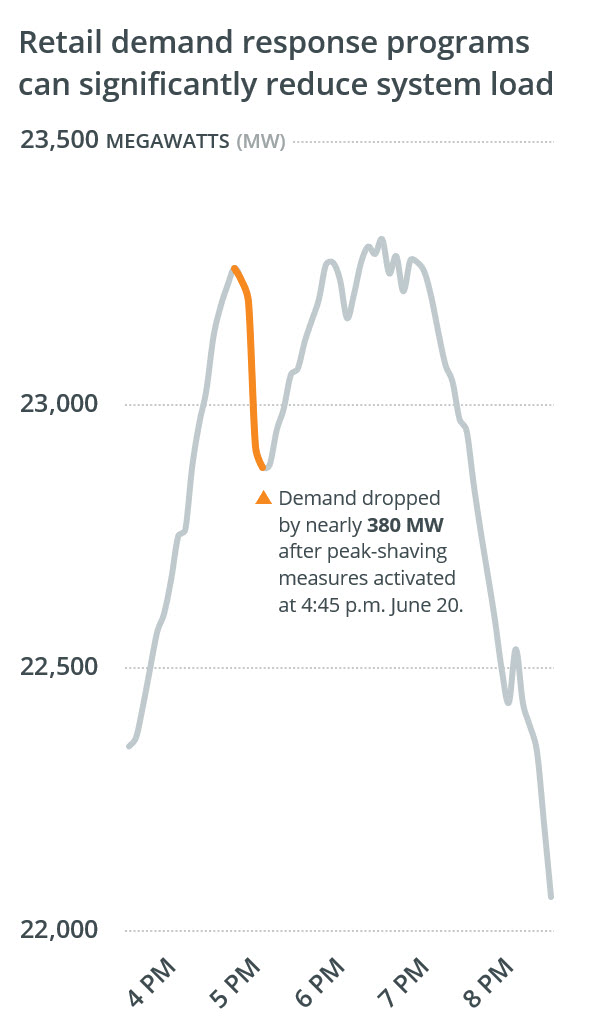January 8, 2025
FAQ: Demand response and the New England power grid
 https://isonewswire.com/wp-content/uploads/2023/12/transmission-04-520x272.png 520w, https://isonewswire.com/wp-content/uploads/2023/12/transmission-04-... 250w, https://isonewswire.com/wp-content/uploads/2023/12/transmission-04.png 1060w" sizes="(max-width: 700px) 100vw, 700px" data-attachment-id="6338" data-permalink="https://isonewswire.com/transmission-04/" data-orig-file="https://isonewswire.com/wp-content/uploads/2023/12/transmission-04.png" data-orig-size="1060,554" data-comments-opened="0" data-image-meta="{"aperture":"0","credit":"","camera":"","caption":"","created_timestamp":"0","copyright":"","focal_length":"0","iso":"0","shutter_speed":"0","title":"","orientation":"0"}" data-image-title="Transmission" data-image-description="" data-image-caption="" data-medium-file="https://isonewswire.com/wp-content/uploads/2023/12/transmission-04-520x272.png" data-large-file="https://isonewswire.com/wp-content/uploads/2023/12/transmission-04.png" />
https://isonewswire.com/wp-content/uploads/2023/12/transmission-04-520x272.png 520w, https://isonewswire.com/wp-content/uploads/2023/12/transmission-04-... 250w, https://isonewswire.com/wp-content/uploads/2023/12/transmission-04.png 1060w" sizes="(max-width: 700px) 100vw, 700px" data-attachment-id="6338" data-permalink="https://isonewswire.com/transmission-04/" data-orig-file="https://isonewswire.com/wp-content/uploads/2023/12/transmission-04.png" data-orig-size="1060,554" data-comments-opened="0" data-image-meta="{"aperture":"0","credit":"","camera":"","caption":"","created_timestamp":"0","copyright":"","focal_length":"0","iso":"0","shutter_speed":"0","title":"","orientation":"0"}" data-image-title="Transmission" data-image-description="" data-image-caption="" data-medium-file="https://isonewswire.com/wp-content/uploads/2023/12/transmission-04-520x272.png" data-large-file="https://isonewswire.com/wp-content/uploads/2023/12/transmission-04.png" />In the years ahead, the clean energy transition is expected to usher in a resource mix that will be more weather-dependent than the one New England has relied on for decades. This will require the region to explore and expand a variety of strategies to ensure continued reliability.
Demand response—a unique power system resource type that ISO New England has been facilitating for more than two decades—will be one of those strategies.
The following are answers to frequently asked questions about demand response. A glossary of relevant terms and acronyms is at the bottom of this article.
What is demand response?
Demand response in ISO New England’s wholesale markets compensates electricity customers for reducing their consumption in response to dispatch instructions.
Who can participate in demand response?
Different kinds of electricity consumers can participate in demand response, usually through aggregation services where one dispatch instruction affects multiple end users.
Many end users participating in demand response are commercial and industrial customers with the ability to temporarily turn off equipment or draw power from their own on-site generators or batteries rather than the grid. Residential customers and battery energy storage units may also participate in demand response. End users participate through aggregators that compete in the region’s wholesale electricity markets. Aggregators are responsible for managing offers, providing near real-time meter data, and ensuring the end users respond to dispatch.
The physical sites where demand reductions happen are called demand response assets (DRAs). To participate in the energy and reserve markets, smaller DRAs must be aggregated into demand response resources (DRRs). Larger DRAs cannot aggregate with other DRAs. Instead, they serve as their own DRRs. DRRs receive dispatch instructions from the ISO. Individual DRRs or groups of DRRs may also elect to offer their capabilities into the capacity market, where they are known as active demand capacity resources (ADCRs).
More details are available on the Demand Resources page at iso-ne.com.
 https://isonewswire.com/wp-content/uploads/2025/01/20241121_dr_breakdown_graphic_jfl-520x312.jpg 520w, https://isonewswire.com/wp-content/uploads/2025/01/20241121_dr_brea... 700w, https://isonewswire.com/wp-content/uploads/2025/01/20241121_dr_brea... 250w, https://isonewswire.com/wp-content/uploads/2025/01/20241121_dr_brea... 1604w" sizes="(max-width: 1060px) 100vw, 1060px" />
https://isonewswire.com/wp-content/uploads/2025/01/20241121_dr_breakdown_graphic_jfl-520x312.jpg 520w, https://isonewswire.com/wp-content/uploads/2025/01/20241121_dr_brea... 700w, https://isonewswire.com/wp-content/uploads/2025/01/20241121_dr_brea... 250w, https://isonewswire.com/wp-content/uploads/2025/01/20241121_dr_brea... 1604w" sizes="(max-width: 1060px) 100vw, 1060px" />How much demand response is there today?
New England’s demand response capacity in 2023 was about 436 megawatts (MW). The largest demand reduction attributable to demand response at any one time that year was 138 MW, whereas the average reduction quantity across all intervals was 1.25 MW.
Reductions in energy use from demand response resources in 2023 amounted to 11 gigawatt-hours (GWh). That’s a small percentage of the region’s annual energy use, but it plays an important role at critical times.
When are demand response resources dispatched?
When the real-time price of electric energy matches or exceeds a demand response resource’s offer price, the ISO may instruct that resource to reduce its consumption by a certain amount for a specified period—usually a few hours around the evening peak. The duration and amount of the reduction will depend on system conditions and the parameters of the resource’s energy market offer.
Demand response resources tend to bid into the energy market at much higher prices than other resources. In 2023, 88% of demand response resources bid at $1,000 per megawatt-hour (MWh).1 For comparison, the average price of real-time energy was $35.70/MWh.
Most of the time, there isn’t a strong incentive for large facilities to take steps such as stopping an assembly line. But that prospect becomes more appealing the higher energy prices go.
 https://isonewswire.com/wp-content/uploads/2025/01/20241119_dr_bids_jfl-520x260.jpg 520w, https://isonewswire.com/wp-content/uploads/2025/01/20241119_dr_bids... 700w, https://isonewswire.com/wp-content/uploads/2025/01/20241119_dr_bids... 250w, https://isonewswire.com/wp-content/uploads/2025/01/20241119_dr_bids... 1727w" sizes="(max-width: 1060px) 100vw, 1060px" />
https://isonewswire.com/wp-content/uploads/2025/01/20241119_dr_bids_jfl-520x260.jpg 520w, https://isonewswire.com/wp-content/uploads/2025/01/20241119_dr_bids... 700w, https://isonewswire.com/wp-content/uploads/2025/01/20241119_dr_bids... 250w, https://isonewswire.com/wp-content/uploads/2025/01/20241119_dr_bids... 1727w" sizes="(max-width: 1060px) 100vw, 1060px" />How are demand response resources compensated?
Generators are paid for the amount energy they put on the grid. Demand response resources are paid for reducing the amount of energy they take off the grid. How much either type of resource gets paid depends on real-time energy prices.
Metering technologies provide the ISO with detailed information about the electricity use of each demand response asset (DRA). Whenever a given DRA is dispatched as part of a demand response resource, its average use over the last 10 weekdays (its baseline) is compared to its average use in the 15 minutes before it received start-up instructions. This establishes the resource’s adjusted baseline. The DRA’s actual energy use during the dispatch period is subtracted from its adjusted baseline to calculate its demand reduction in megawatt-hours. It will be compensated as though it had generated the same amount of megawatt-hours, according to the real-time energy prices at each five-minute interval during the dispatch period.
 https://isonewswire.com/wp-content/uploads/2025/01/20241217_dr_dispatch_jfl2-520x312.jpg 520w, https://isonewswire.com/wp-content/uploads/2025/01/20241217_dr_disp... 700w, https://isonewswire.com/wp-content/uploads/2025/01/20241217_dr_disp... 250w, https://isonewswire.com/wp-content/uploads/2025/01/20241217_dr_disp... 1433w" sizes="(max-width: 1060px) 100vw, 1060px" />
https://isonewswire.com/wp-content/uploads/2025/01/20241217_dr_dispatch_jfl2-520x312.jpg 520w, https://isonewswire.com/wp-content/uploads/2025/01/20241217_dr_disp... 700w, https://isonewswire.com/wp-content/uploads/2025/01/20241217_dr_disp... 250w, https://isonewswire.com/wp-content/uploads/2025/01/20241217_dr_disp... 1433w" sizes="(max-width: 1060px) 100vw, 1060px" />What are the challenges to wider adoption of demand response?
Retail customers typically pay the same amount for electricity no matter what time of day they use it. Flat retail rates insulate consumers from price volatility in the wholesale markets, but they also prevent consumers from potentially benefiting from that volatility. For example, if customers were exposed to variable pricing, they could save money by shifting their electricity use to times when wholesale prices are low, which tends to correspond with lower overall demand.
Transitioning retail customers to a variable rate structure—such as real-time, time-of-use, or critical-peak pricing—would require changes in utility policies set by each New England state, as well as the widespread installation of advanced metering infrastructure to transmit electricity use data on an hourly basis.
How can residential electric customers participate in demand response?
 https://isonewswire.com/wp-content/uploads/2025/01/20241120_dr_retail_impact_jfl-520x885.jpg 520w, https://isonewswire.com/wp-content/uploads/2025/01/20241120_dr_reta... 250w" sizes="(max-width: 602px) 100vw, 602px" />
https://isonewswire.com/wp-content/uploads/2025/01/20241120_dr_retail_impact_jfl-520x885.jpg 520w, https://isonewswire.com/wp-content/uploads/2025/01/20241120_dr_reta... 250w" sizes="(max-width: 602px) 100vw, 602px" />Some electric utilities offer programs that reward residential customers for reducing consumption or switching to backup power at times of highest demand. These programs may be referred to as virtual power plants or peak shaving. They may also involve managed charging of electric vehicles. ISO-NE refers to such programs as retail demand response because they operate outside of ISO dispatch for the wholesale markets.
Retail demand response requires installation of equipment such as smart thermostats and other equipment through which a utility can adjust your home heating and cooling or the operation of other appliances. Other approaches include sending text or email alerts calling for voluntary reduction of electricity use during peak hours.
For example, on one hot day in summer 2024, retail demand response programs yielded an estimated 379 MW drop in demand as observed by the ISO’s control room. Demand continued to climb after that, but retail demand response shifted energy consumption away from the peak.
Retail demand response programs are not visible to or dispatched by the ISO. However, the ISO must respond to any changes in grid demand resulting from these programs by dispatching other resources up or down accordingly.
Are there other ways individuals can change their electricity use to bring down the peak?
Individuals can see the real-time resource mix and estimated emissions on the ISO Express website and our mobile app, ISO to Go. The app allows users to sign up for alerts whenever wholesale prices reach a certain threshold or when abnormal system conditions are reported. These tools provide New Englanders with up-to-the-minute information they can use to make decisions around electricity use.
Go deeper
You can learn more about demand response from a presentation the ISO gave to the Consumer Liaison Group.
Views: 13
Comment
© 2025 Created by Webmaster.
Powered by
![]()
You need to be a member of Citizens' Task Force on Wind Power - Maine to add comments!
Join Citizens' Task Force on Wind Power - Maine